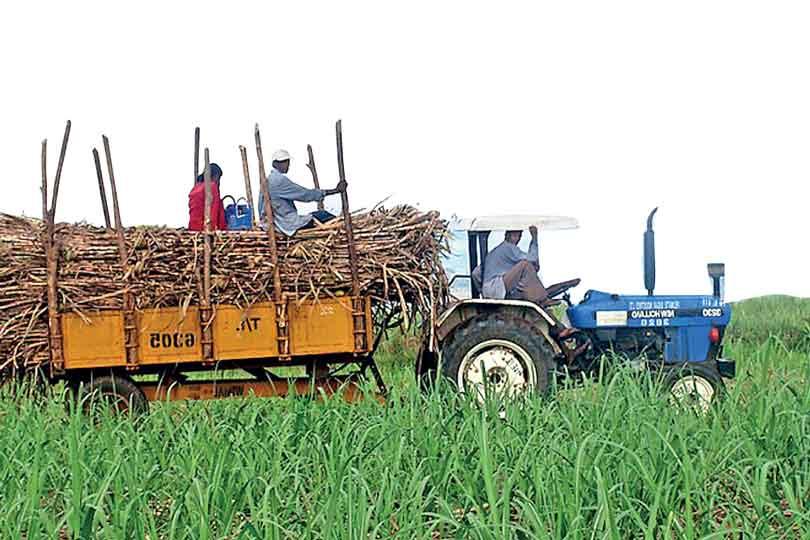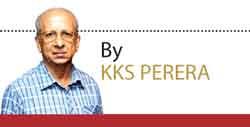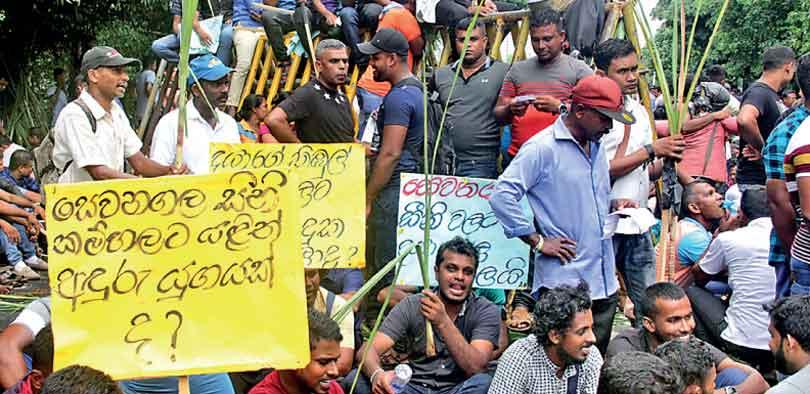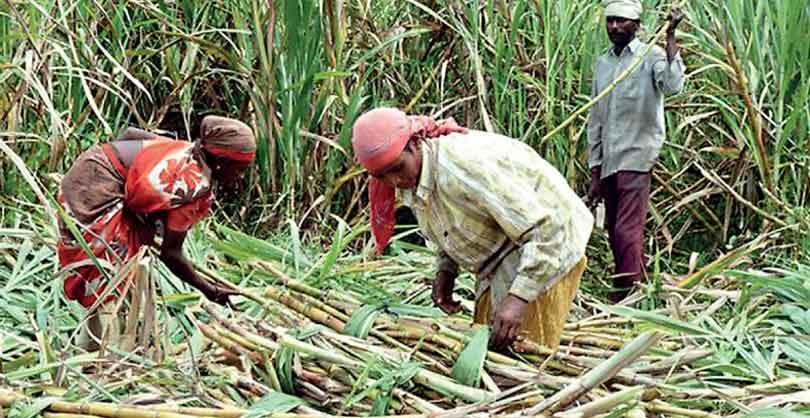23 Mar 2021 - {{hitsCtrl.values.hits}}

Sugar cane in Sri Lanka
 One is reminded of ‘Archie’s Comedy Hour’ and its timeless animated song, “Sugar, Sugar-Honey, Honey…” shown on CBS-TV five decades ago and the famous fables of “Andare”, the celebrated court jester and our childhood hero. In the midst of the sugar controversy Party leaders, it was speculated, had unanimously agreed to cooperate with a proposal to enhance their allowances, insurance cover and pensions? People’s representatives who occupy the front row benches across the well of the House have agreed to go ahead with the proposal at a recent meeting.
One is reminded of ‘Archie’s Comedy Hour’ and its timeless animated song, “Sugar, Sugar-Honey, Honey…” shown on CBS-TV five decades ago and the famous fables of “Andare”, the celebrated court jester and our childhood hero. In the midst of the sugar controversy Party leaders, it was speculated, had unanimously agreed to cooperate with a proposal to enhance their allowances, insurance cover and pensions? People’s representatives who occupy the front row benches across the well of the House have agreed to go ahead with the proposal at a recent meeting.
How Andare Ate the King’s Sugar
Andare the witty court jester skilled in making satirical comments and pranks amused both Royals and ordinary people alike getting the better of people and even the King. The tales mainly highlight the mindlessness of people. One morning, Andare saw some sugar spread out in the courtyard, in the palace, left to dry on a mat. Pretending not to know what it was Andare asked the King, “Your Majesty, what is this stuff on the mat?” “It’s white sand” replied the King, prompting our man go for a “cunning plan to eat the sugar” which succeeded compelling the mighty monarch to part with the stock of sugar.
Who tricked our king to cheat the treasury to the tune of Rs15.9 billion in a sugary deal that made the entire populace ‘diabetic’ surpassing the 2001-2004 UNP Government’s sale of a sugar plant complete with invaluable machinery in working condition plus a fixed deposit of Rs.985 million for a song [less than the scrap iron value] to a Party stalwart? The ex-minister who financed the Party’s election campaign received these factories at heavily under-valued terms, instead of prioritizing the production of sugar, had engaged in producing Ethanol for the alcohol factories.

Ptotest by the workers of Sevanagala sugar factory (File photo)
Who tricked our king to cheat the treasury to the tune of Rs15.9 billion in a sugary deal that made the entire populace ‘diabetic’ surpassing the 2001-2004 UNP Government’s sale of a sugar plant complete with invaluable machinery in working condition plus a fixed deposit of Rs.985 million for a song
Brief history of Our Sugar Industry
Sugarcane, botanically termed Saccharum officinarum, is the only sugar crop cultivated in the Island and the manufacture of sugar began in early 19th century. With an annual per capita consumption of around 30 kg, the annual requirement is around 550,000 Mt. Tons of which only 9-10% is produced locally at the Sevenagala, Pelawatte, Hingurana, and Kanthale factories. Southern coastal areas are said to be the most suitable for sugarcane cultivation where the land is being used extensively for paddy. In a country where one and a half centuries ago, it was self-reliant in the supply of sugar, has turned out to be virtually non-existent by the end of the last century.
The reasons for this failure are both social and environmental. The main cause can be attributed to migration of skilled labour to Queensland, Australia which date back to the 1870s when the administrative system down-under sought out the possibility of importing skilled labour from Ceylon for work on their sugar cane plantations. [Ironically, during the same period, both Coffee and Tea plantations here got labour brought down from South India]. The first batch of Sri Lankans arrived there in the 1880s to work in sugarcane plantations in the State, and were famously known as ‘Cingalese’, a common name for all Ceylonese citizens irrespective of racial or ethnic identities. A community of Ceylonese origin was believed to exist on Thursday Island, [an island situated in the Northern tip of Queensland] since early 20th century.
It was in 1882, that the first group of sugarcane workers numbering 480 left Colombo for Queensland — and landed in Mackay and Bundaberg, two cities in the East coast.
A Czechoslovakian gift received during the Sirimavo Bandartanaike’s government in 1960, the Kantale Sugar Factory was considered the largest facility in Asia that provided direct and indirect employment to about 10,000 people.
It ran earning a Rs.70 million profit during the J R Jayewardene era from 1980 to 1986. However in 1993, the R. Premadasa government took a policy decision to hand it over to a private company resulting in its closure six years later. They in fact privatized three sugar factories. Sevanagala and Pelawatte sugar were profitable entities, and the privatization programme affected the lives of a large number of sugar cane farmers.
The Yahapalana government accused though, for doing nothing deserves credit for initiating a proposal to save 50 per cent of the sugar import bill by the end of 2020 through a project implemented under two stages and operated as a BOT [Build Own and Transfer] venture on a 30-year lease. It was a tri-party agreement among Government, consortium and the farmers.
Former Finance Minister Ravi Karunanayake, now in remand custody over his alleged involvement in the CB bond scam in a strange co-incident took initiatives to prevent a Sugar Scam by a future administration like a huge stock of sugar under Bonded Store [pending duty clearance] being released charging only -/25 Cents a kilo as State levies, said in a statement, “Sri Lanka will install a new programme to become self-sufficient in sugar. Plans are in the pipeline to increase cultivation of sugarcane and setting up 15 new sugar manufacturing plants in the country…”. Karunanayake, who, at a subsequent “scientific allocation of subjects” under President Sirisena in a Cabinet reshuffle swapped Finance with Mangala’s Foreign [but insisted on taking the two lotteries along with him]. Ravi K said, Cabinet has already approved his policy framework proposed for a sugar development project. He also stated, ‘The second project on a long term basis will be put into operation with the involvement of the private sector to make the nation self-sufficient in sugar by 2025. Another 31,000 hectares of land was to be cultivated by 2021, in addition to the prevailing 26,000 hectares owned by four sugar manufacturing factories’, the statement said.

Sugar cane farmers (File photo)
His sugar development plan included a structure to ensure a quality cane cultivation system, with a fair consumer price, provide necessary wherewithal to get better irrigation for the plantation and encourage small cultivators to enjoy profits out of the proposed project as well. The farmer families which joined this system were expected to earn around Rs.30,000 a month. The government lost in 2020, as usual the new government discarded the proposal.
While some seniors in the opposition are playing dirty games; the former ministers and their off-spring create dramas – from white vans and crocodile tanks to Black vans and abduction of journalists, thus holding up the entire opposition to discredit, the country is being pulled apart, politics tearing it for partisan reasons except on their privilege issues, where the members of both sides pull together.
Writer can be contacted at [email protected]
29 Nov 2024 4 hours ago
29 Nov 2024 6 hours ago
29 Nov 2024 7 hours ago
29 Nov 2024 7 hours ago
29 Nov 2024 8 hours ago